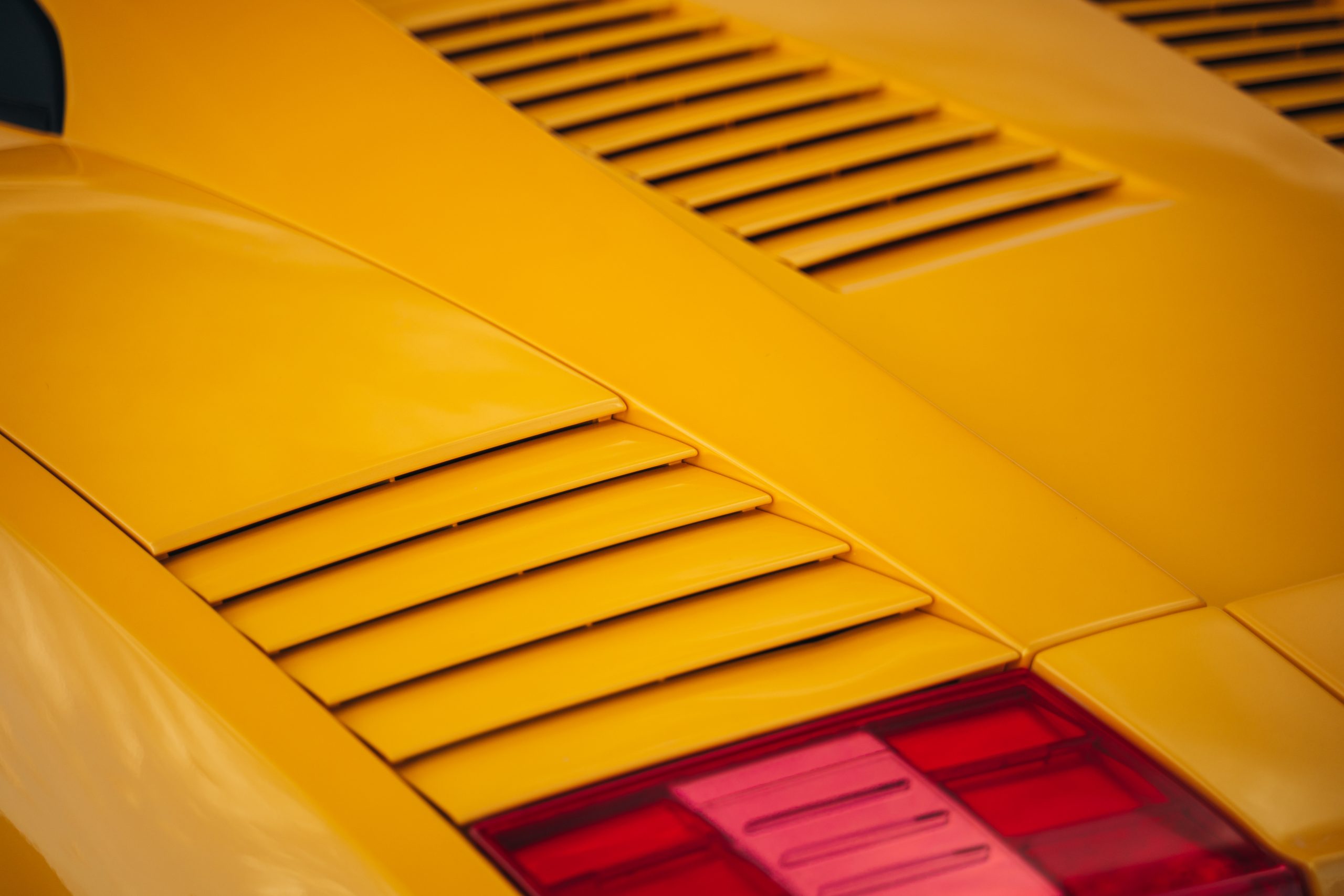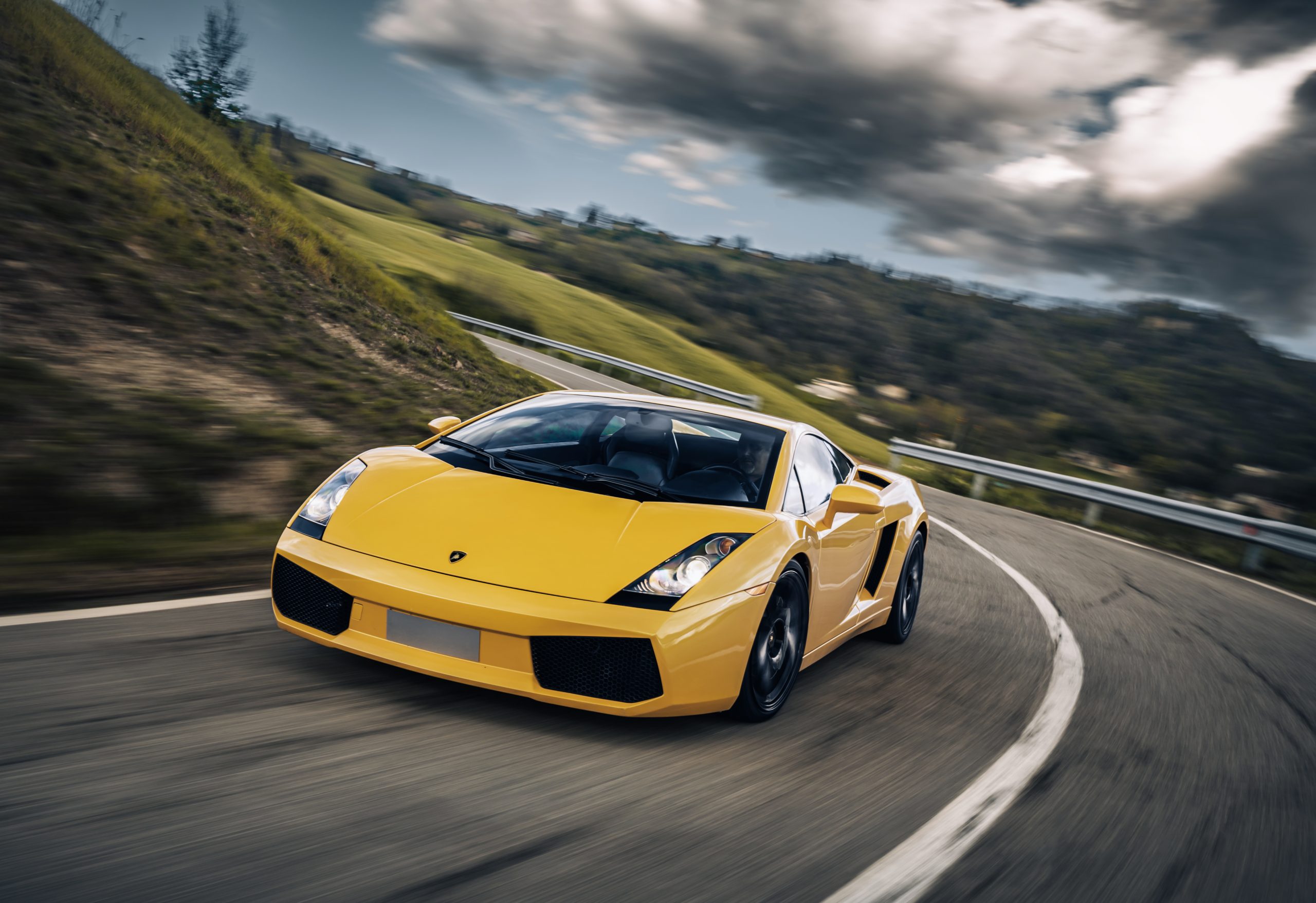Welcome to Lamborghini Legends, a series of stories to mark the Italian brand’s 60th anniversary. In each instalment, Nik Berg gets behind the wheel of one of Sant’Agata’s all-time greats. This time it’s the Audi-influenced Gallardo.
According to the Lamborghini’s dashboard display, today is the 4th of September, 2003. The date is just a few weeks after the company unveiled this car, the Gallardo, to the public at the Geneva Motor Show. The vehicle had taken a long and winding road to get there.

Sixteen years earlier, Lamborghini began work on a successor to the V8-powered Urraco (1972–79) and Jalpa (1981–88). “Project 140” was conceived with a V10 engine, and, had it made production on the original timeline, would have been the first production car in the world to have such a layout, predating even the Dodge Viper.
The 72-degree V10 developed by Massimo Ceccarani and Maurizio Reggiani was innovative, if impractical. For example, the gearbox was integrated into the oil-pan area. The configuration was a neat piece of packaging but raised the engine too high; the arrangement would mess up any car’s center of gravity. Development stopped. Lamborghini started shopping around for an off-the-shelf V8 to use for the car, internally known as the “baby Diablo.”
In 1998 Audi bought the Italian supercar brand and immediately breathed new life into the project. Never mind using someone else’s V8; when it was unveiled to the public as the Gallardo in 2003, the car used V10 power and was built on an aluminium tubular spaceframe.
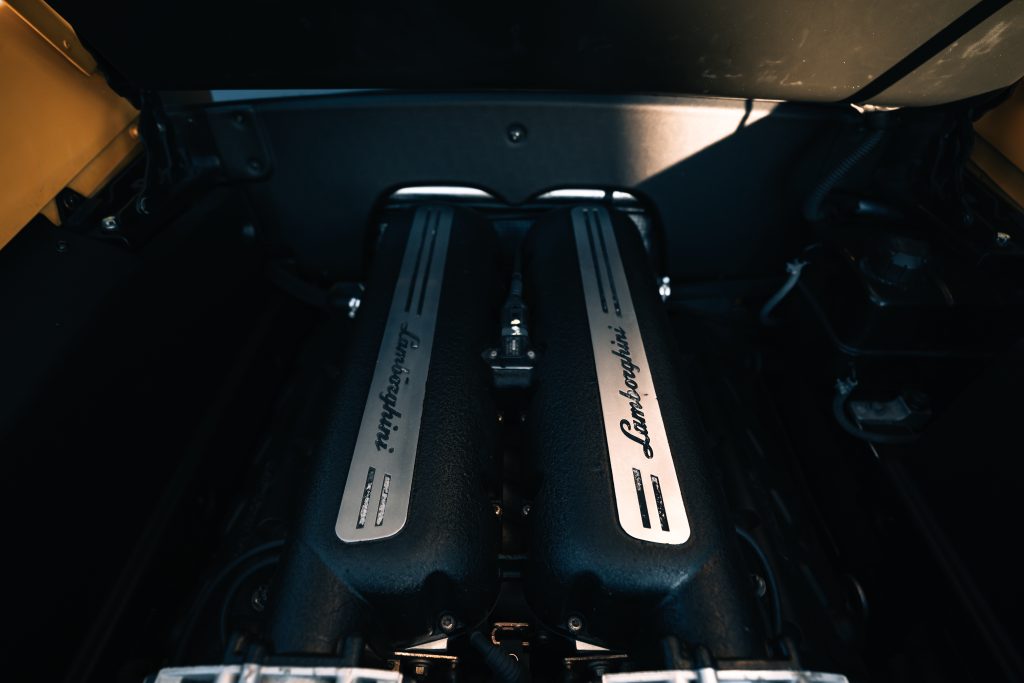
The five-litre V10 engine was of Lamborghini’s own design, its two banks of five cylinders at a 90-degree angle. To reduce weight and cost, the crankcase was made with a hypereutectic aluminum, which allowed cylinder liners to be cast directly on the aluminium. This method shortened the distance between the cylinders and, in turn, the overall length of the engine. The block and crankcase would be manufactured by Audi. Engine assembly was the job of the Lamborghini artisans in Sant’Agata.
Lamborghini offered the Gallardo with a six-speed gated manual transmission, but the robotised E-Gear system proved the clear winner with customers. It’s estimated that only 15 per cent of Gallardos left the factory with stick shifts. Also a rarity are two-wheel drive models. Only a handful were made, including 250 LP550-2 Valentino Balboni editions and a smattering of one-offs.
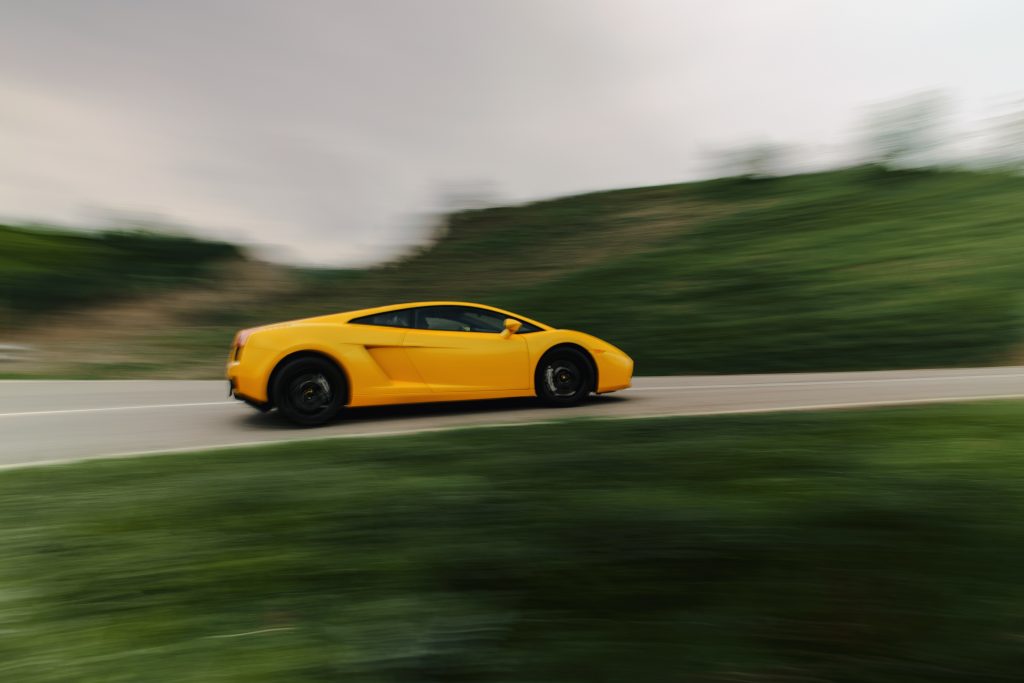
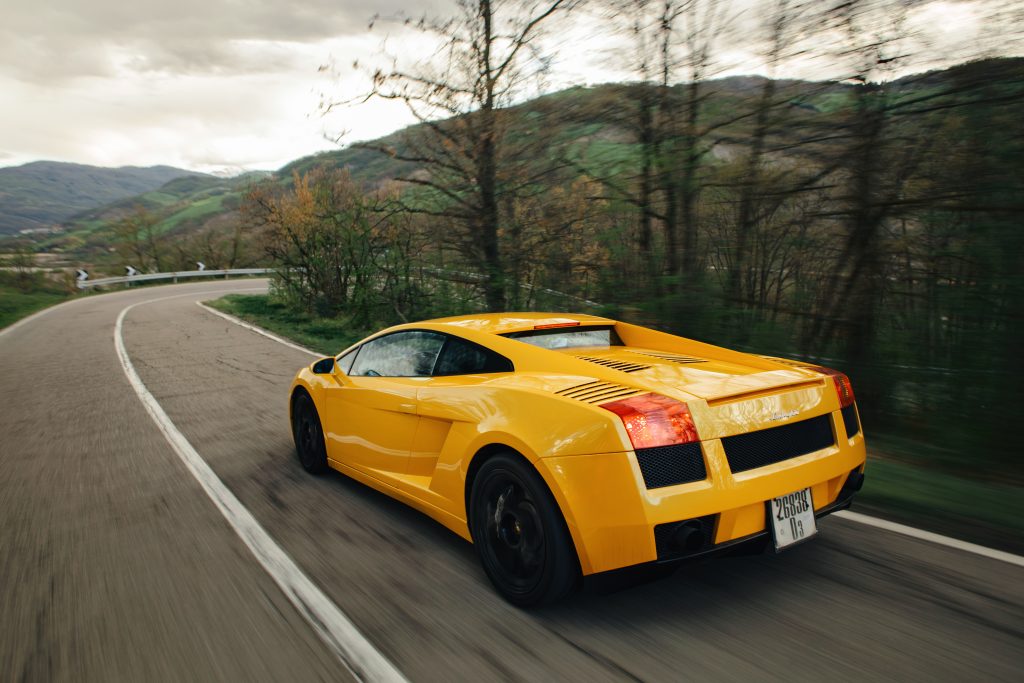
The Gallardo LP510-4 here is a perfect example of what is still Lamborghini’s most successful model. It’s a fabulous-looking thing; Luc Donckerwolke’s design is aging well. I’m particularly fond of the irregular, five-sided “nostrils” on the bull’s snout. Even in Giallo Midas yellow, the Gallardo is not exceptionally showy: The profile is classic supercar wedge and even the sizeable air intakes for the engine are unfussy. The louvered engine cover and vents are the best features of a rear end that’s otherwise a little plain, however.
Wide-opening, conventional doors reveal an interior to which the passing years have been less kind. There’s a notable contrast in quality between the areas that have been hand-stitched in grey hide and those that are made from plastic. Audi-sourced switches for the HVAC system are perfectly functional but just don’t feel special.
My biggest gripe is with the paddles for the E-Gear transmission. Firstly, they’re plastic, a choice which smacks of penny-pinching. Secondly, they’re set too high: With hands at quarter-to-three on the wheel, you have to reach up to shift gears.
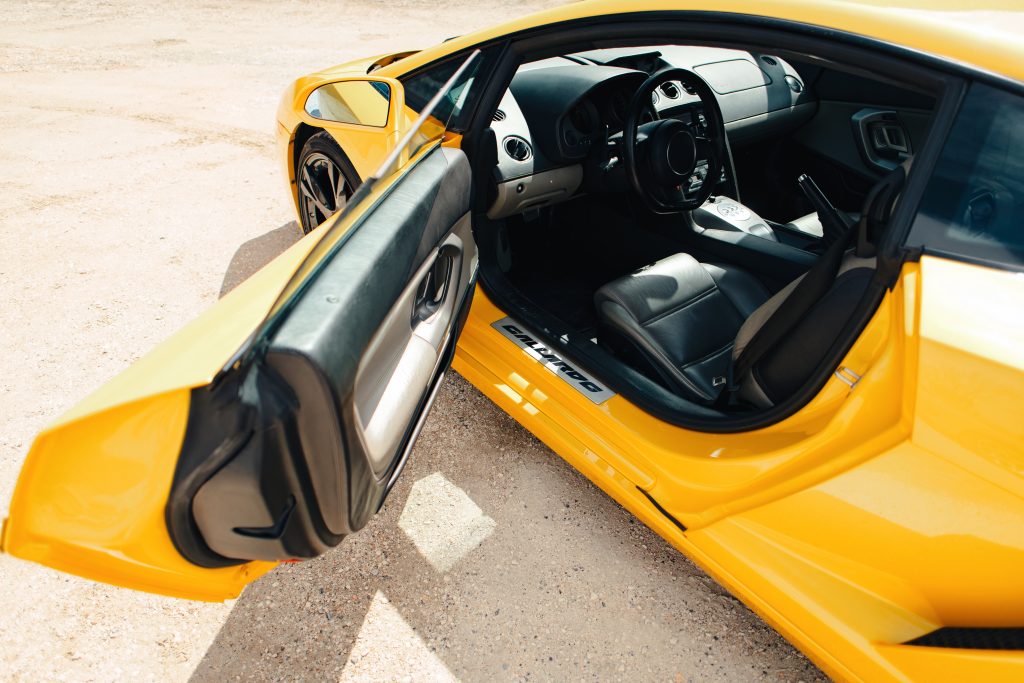
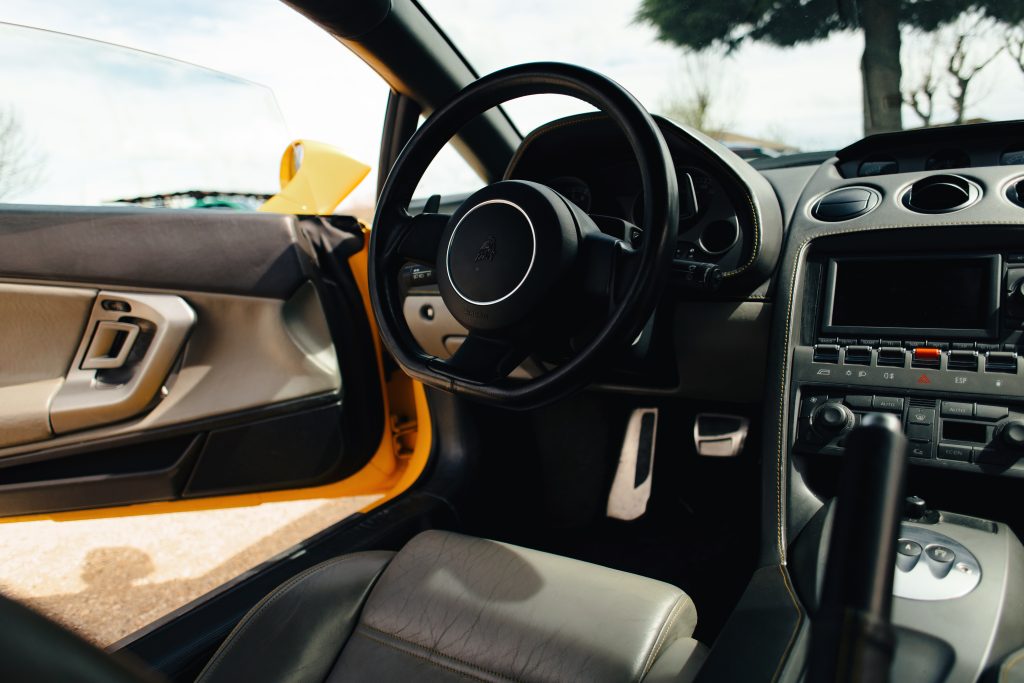
The poor shifting ergonomics are a shame, because that 500bhp V10 loves to be stretched right to its 8,000rpm redline. Clicking up and down with the paddles is fast and effective but hardly joyful. At low speeds, shifting can also be a bit herky-jerky, requiring very careful application of the throttle for smooth progress.
No Lambo likes to travel slow, and as last in the line of a fast-moving convoy of Sant’Agata classics, slow is not an option for me. The Gallardo might be down two cylinders on the V12 cars ahead, but the slightly off-beat wail of the V10 still goes down as one of the greatest automotive backing tracks ever made. I can’t resist downshifting a couple of times in a tunnel just to hear the sound amplified off the concrete walls.
Final Gallardo iterations would push out an additional 60 horsepower, but the first models were hardly under-endowed. From a standing start to 62mph takes 4.2 seconds, with top speed pegged at 192mph.
Beyond the sound and speed the Gallardo is, well, just rather easy to drive. Only parking potentially raises a problem, thanks to Lamborghini’s traditional view that what’s behind you simply doesn’t matter. The power steering is meaty enough without being taxing, the brakes seem more than up to the task, with four-pot calipers on the front and twin-piston ones at the rear. All-around independent suspension with deformable double wishbones provides tidy body control and a ride that one could live with on a daily basis.
Livability, of course, was the point of the Gallardo in the first place. Its arrival opened up an entirely new market for the brand: customers who wanted to drive their Lamborghinis, not wrestle them. 14,022 Gallardos were produced before the Huracán came along.
That relatively generous production run makes the Gallardo by far the least expensive way to own a modern Lamborghini today, with prices of daily-driver examples starting around £70,000. A price worth paying for the V10 engine alone.




